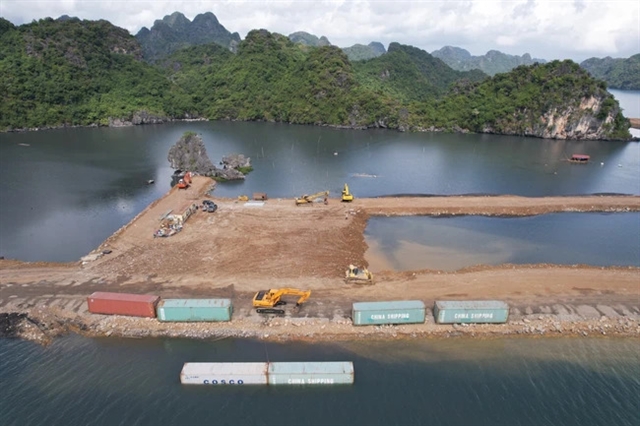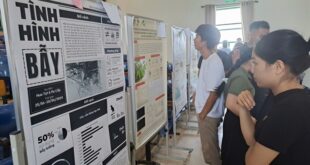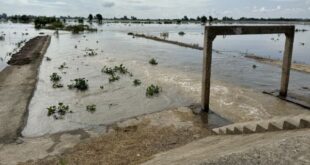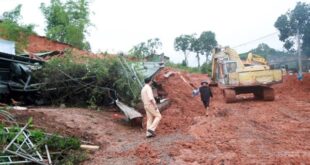 |
| Scene of 10B urban project in Quang Hanh Ward, Cẩm Phả City. — VNA/VNS Photo |
QUẢNG NINH — In response to the recent public criticisms surrounding a land reclamation project in Cẩm Phả City, the northern province of Quảng Ninh, the director of the Cultural Heritage Department under the Ministry of Culture, Sports, and Tourism (MoCST) reassured the public that the implementation must comply with legal regulations.
Director Lê Thị Thu Hiền said that although the project area is situated in the mountainous zone, swamps, and uninhabited lands, without cultural or historical heritage, tourism planning, and situated at the end of Bái Tử Long Bay, legal regulations still must adhere to.
“We need to preserve the original elements of heritage as well as the values that contribute to its beauty. Regardless of how development proceeds, it is crucial to uphold these principles, especially for heritage sites recognised by UNESCO,” she told Vietnam News Agency.
MoCST provided written feedback on the project’s implementation, flagging concerns about environmental pollution, including not only waste but also issues impacting the ecosystem of Hạ Long Bay.
After that, the Quảng Ninh Province People’s Committee promptly instructed relevant agencies to halt the 10B urban project in Quang Hanh Ward, Cẩm Phả City.
While expressing the ministry’s continual support for developmental initiatives, director Lê Thị Thu Hiền emphasised the need to base it on heritage conservation, ensuring the original elements and ecological landscape of the heritage.
Her affirmation was made on the sidelines of the consultation conference on the draft amended Cultural Heritage Law on Monday.
The director said that cultural heritage is an asset, making a positive contribution to becoming an endless resource in sustainable socio-economic and tourism development.
Earlier, Deputy Minister of Culture, Sports, and Tourism Hoàng Đạo Cương issued a document, requesting the Quảng Ninh Province People’s Committee to instruct relevant agencies in coordination with local authorities and investors to promptly investigate the on-site situation of the project and suggest timely measures for addressing and safeguarding the heritage values.
According to the feasibility study report approved by the provincial People’s Committee, the project has a total area of 31.82 hectares, with 12.19 per cent of the area situated within the buffer zone of the world natural heritage site, Hạ Long Bay.
The proposed project area, located in the downstream of the Lô Phong Stream, bordering Hạ Long City, experiences recurrent mud deposition during storms, leading to the deterioration of the landscape bordering Bái Tử Long and Hạ Long bays.
The project is expected to contribute to improving the life of the local residents, creating green landscapes in the urban environment. This also aims to extend the influx of tourists beyond the current focus areas of Hạ Long Bay, Tuần Châu, Bãi Cháy.
To minimise adverse impacts on heritage, the Ministry of Culture, Sports, and Tourism recommends that the Quảng Ninh People’s Committee instruct relevant agencies to guide the investor in strictly implementing the outlined measures, particularly emphasising the need for thorough environmental impact assessments in accordance with the guidelines of the International Union for Conservation of Nature (IUCN). — VNS
- Reduce Hair Loss with PURA D’OR Gold Label Shampoo
- Castor Oil Has Made a “Huge” Difference With Hair and Brow Growth
- Excessive hair loss in men: Signs of illness that cannot be subjective
- Dịch Vụ SEO Website ở Los Angeles, CA: đưa trang web doanh nghiệp bạn lên top Google
- Nails Salon Sierra Madre
 VnExpress News The News Gateway of Vietnam
VnExpress News The News Gateway of Vietnam





